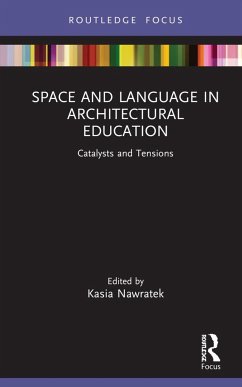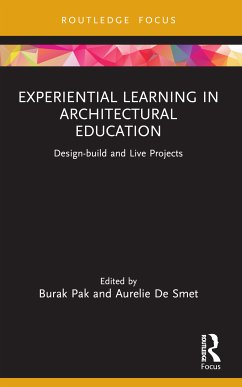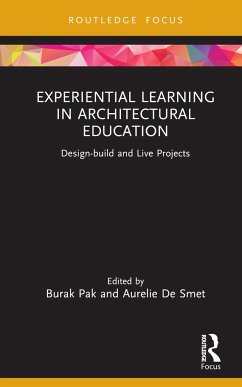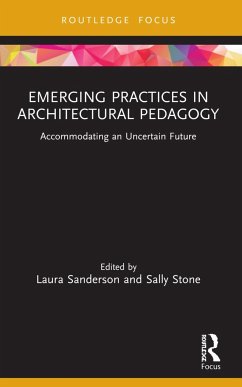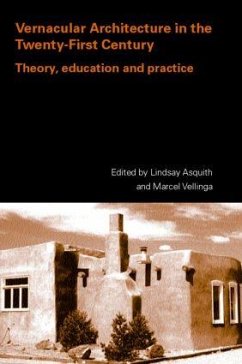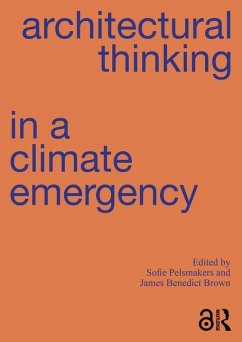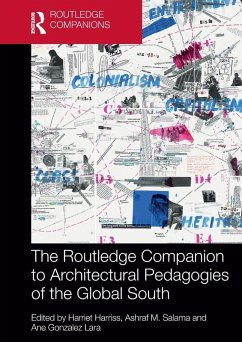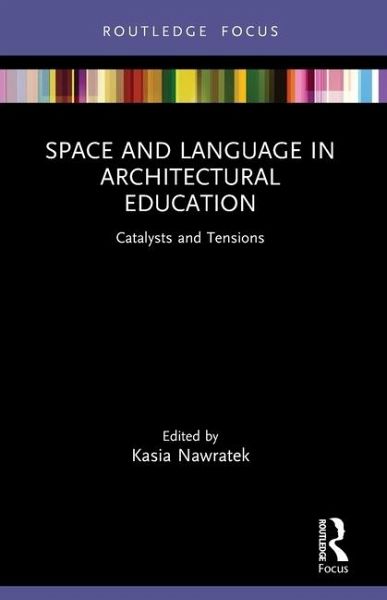
Space and Language in Architectural Education
Catalysts and Tensions
Herausgegeben: Nawratek, Kasia
Versandkostenfrei!
Versandfertig in 6-10 Tagen
22,99 €
inkl. MwSt.

PAYBACK Punkte
11 °P sammeln!
Architects habitually disregard disciplinary boundaries of their profession in search for synergies and inspiration. The realm of language, although not considered to be architects' natural environment, opens opportunities to further stretch and expand the architectural imagination and the set of tools used in the design process. When used in the context of architectural pedagogy, the exploration of the relationship between space and language opens the discussion further to include the reflection on the design studio structure, the learning process in creative subjects and the ethical dimensio...
Architects habitually disregard disciplinary boundaries of their profession in search for synergies and inspiration. The realm of language, although not considered to be architects' natural environment, opens opportunities to further stretch and expand the architectural imagination and the set of tools used in the design process. When used in the context of architectural pedagogy, the exploration of the relationship between space and language opens the discussion further to include the reflection on the design studio structure, the learning process in creative subjects and the ethical dimension of architectural education.
This book offers a glimpse into architectural pedagogies exploring the relationship between space and language, using literary methods and linguistic experiments. The examples discuss a wide range of approaches from international perspective, exploring opportunities and challenges of engaging literary methods and linguistic experiments in architectural education.
The theme of Catalysts discusses the use of literary methods in architectural pedagogy, where literary texts are used to jumpstart and support the design process, resulting in deeply contextual approaches capable of subverting embedded hierarchies of the design studio. Tensions explore the gap between the world and its description, employing linguistic experiments and literary methods to enrich and expand the architectural vocabulary to include the experience of space in its infinite complexity.
This book will be useful for innovators in architectural education and those seeking to expand their teaching practice to incorporate literary methods, and to creatives interested in making teaching a part of their practice. It may also appeal to students from design-based disciplines with an established design studio culture, demonstrating how to use narrative, poetry and literature to expand and feed your imagination.
This book offers a glimpse into architectural pedagogies exploring the relationship between space and language, using literary methods and linguistic experiments. The examples discuss a wide range of approaches from international perspective, exploring opportunities and challenges of engaging literary methods and linguistic experiments in architectural education.
The theme of Catalysts discusses the use of literary methods in architectural pedagogy, where literary texts are used to jumpstart and support the design process, resulting in deeply contextual approaches capable of subverting embedded hierarchies of the design studio. Tensions explore the gap between the world and its description, employing linguistic experiments and literary methods to enrich and expand the architectural vocabulary to include the experience of space in its infinite complexity.
This book will be useful for innovators in architectural education and those seeking to expand their teaching practice to incorporate literary methods, and to creatives interested in making teaching a part of their practice. It may also appeal to students from design-based disciplines with an established design studio culture, demonstrating how to use narrative, poetry and literature to expand and feed your imagination.





